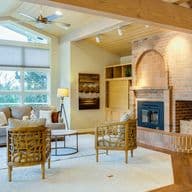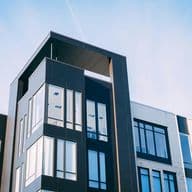
- 2 min read
What is the difference between constructed and useful metres?

There are many people who, when buying or selling a property, are not very clear about the concept of built and useful metres. This is exploited by some unscrupulous sellers who take advantage of this confusion to obtain a higher return on the sale.
For this reason, the most sensible thing to do is to promote the sale of a property by stating the square metres that appear in the land registry as useful or constructed metres. In any case, it is always advisable to know the differences between useful and built square metres:
- Useful surface area: this refers to the square metres that are found in the interior of the property inside the dwelling and can be walked on. This category also includes the space occupied by wardrobes.
- Built-up area: on the other hand, when we talk about built-up area we include all the existing metres within the perimeter of the property (galleries, ventilation ducts, walls, partitions, etc.)
Table of Content
Valuation on useful or constructed metres
Private use of common areas
Calculating usable metres from built metres
Valuation on useful or constructed metres
Knowing this difference, the valuation on usable or constructed metres is preferably carried out on the basis of the usable metres. This is the best way to avoid problems with measurement discrepancies. In this sense, as we have already pointed out, it is best to refer to the square metres that appear in the deed, as in the land registry, in addition to the built metres, the corresponding percentage of the common areas is also usually included.
Furthermore, it should be borne in mind that when carrying out the valuation on useful or built metres, other elements such as storage rooms or garage spaces are also included parking spaces must necessarily be computed separately with respect to the main dwelling.

Private use of common areas
Another aspect to consider is the private use of common areas. In some cases, certain dwellings, such as first floors or penthouses, have been assigned the exclusive use of common areas such as interior patios or terraces. These metres, which for legal purposes count as common areas, are used exclusively by a specific dwelling and therefore they have a recognised right to use them right in the constitutive title of the horizontal property of the building. This fact tends to significantly increase the value of the benefited property, as although these common elements are not their property, the use and enjoyment of them is.
Calculating usable metres from built metres
Finally, the task of calculating useful metres from built metres may not be easy. In any case, using the measurements that appear on the cadastre can lead to confusion, since, for example, covered terraces, unless they are closed on three of their four sides, compute at 50%, i.e. a terrace of 10 square metres will appear in the land registry as a useful or constructed area of 5 metres. This is why certain measurements carried out by unqualified professionals can lead to confusion.
In any case, it is advisable to use the services of an architect to carry out this type of calculation and to determine in his report the effective useful metres of the property.
You may also be interested in
 How to organise a move step by step: checklist, procedures and essential tips
How to organise a move step by step: checklist, procedures and essential tips Mistakes when selling your home: the most common errors and how to avoid them
Mistakes when selling your home: the most common errors and how to avoid them What the ITE is and why it’s key when buying or selling a property
What the ITE is and why it’s key when buying or selling a property Why rent out my flat through an estate agency
Why rent out my flat through an estate agency Buying a second home: a complete guide to making the right decision
Buying a second home: a complete guide to making the right decision Short-term rental registration in Spain: regulations and requirements
Short-term rental registration in Spain: regulations and requirements Rent to own: how it works and what you need to know
Rent to own: how it works and what you need to know Tips before renting an apartment: everything you need to know before signing
Tips before renting an apartment: everything you need to know before signing
FOR MORE INFORMATION
Contact us



Engel & Völkers Spain
Avenida Diagonal 640, 6B
08017 Barcelona, España
Tel: +34 900 747 281